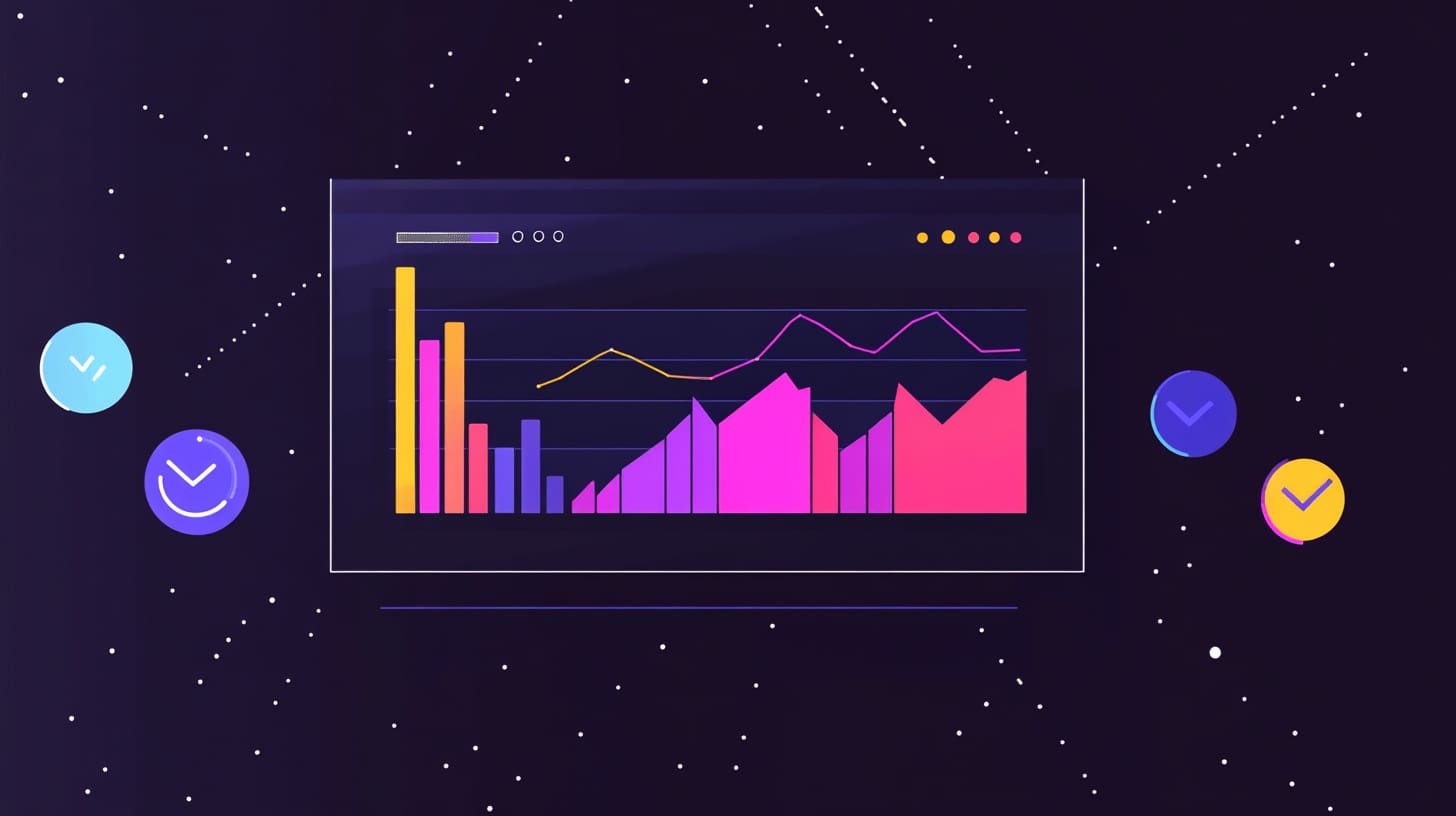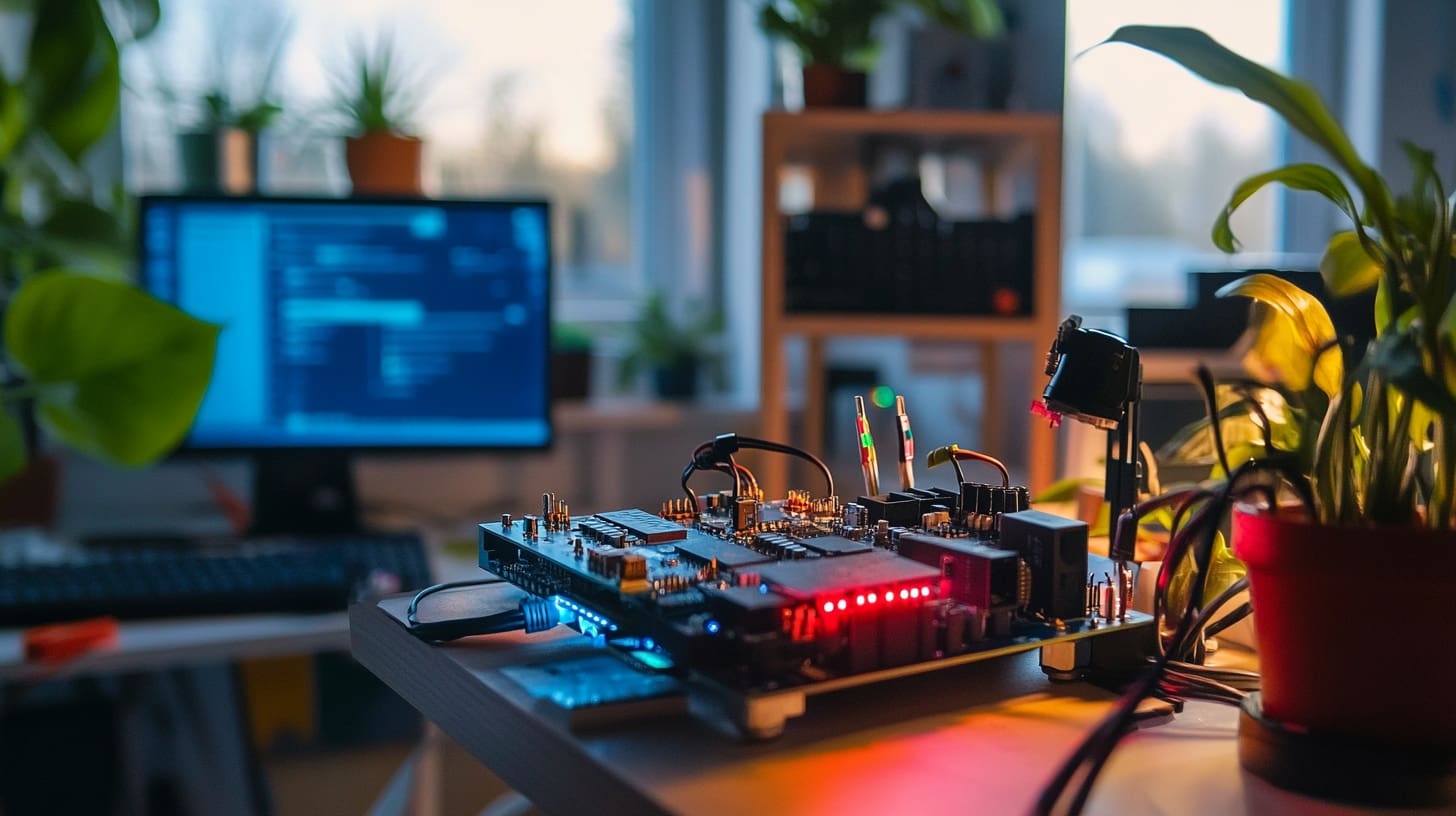The Google Play Store is the official app marketplace for Android devices, offering a wide array of applications, games, and other digital content. For those new to the Android ecosystem, navigating this vast sea of apps can seem daunting at first. However, with a bit of guidance, the process becomes straightforward. This guide is designed to walk beginners through the basics of installing apps on Android via the Play Store, while providing useful tips to enhance their experience.
When you purchase an Android device, whether it’s a smartphone, tablet, or other gadget, it comes preloaded with the Google Play Store. This platform is home to millions of apps that span across various categories, from productivity tools to entertainment apps, education, and even utilities. It’s important to familiarize yourself with the Play Store because it acts as a gateway to all things digital for Android. In this first section, we will look into setting up your device, understanding the layout of the Play Store, and the steps to install your first app.
Why You Need a Google Account?
Before diving into the Play Store, you need a Google account. Your Google account is your key to accessing a wide range of services, including Gmail, Google Drive, and of course, the Play Store. When you first set up your Android device, the system prompts you to sign in to your Google account. If you don’t have one yet, the setup wizard allows you to create one on the spot. This account will sync your apps, settings, and data across devices, allowing for a seamless Android experience.
Having a Google account not only gives you access to the Play Store but also enables you to backup your app data and settings to the cloud. This is extremely useful if you ever switch to a new device or if you need to reset your phone. Once your Google account is synced with your device, you’re ready to explore the world of apps!
Navigating the Play Store Interface
The Play Store is designed to be intuitive, even for beginners. When you first open the Play Store, you’ll notice a simple and clean layout with easy-to-use navigation tools. The home screen features a collection of apps categorized by their popularity, utility, or recent updates. At the top of the Play Store, you’ll see a search bar where you can directly type in the name of the app you’re looking for. To the right of the search bar is your profile icon, which houses important settings like account management and payment methods.
Below the search bar, the Play Store divides content into broad sections such as “For You,” “Top Charts,” and “Categories.” Each of these tabs is curated based on your interests and past downloads. The “For You” section provides personalized app suggestions, while “Top Charts” lists the most popular apps across various categories. The “Categories” tab helps you find apps in specific niches like Games, Books, or Productivity.
One of the most important tabs for beginners is the “My apps & games” section. You can access this by tapping on your profile icon and selecting the corresponding menu option. Here, you’ll find a list of all the apps installed on your device, apps that need updates, and a queue of apps that are currently downloading. This section also provides a useful way to uninstall apps or clear the cache if you’re troubleshooting an issue.
Searching for Apps
Now that you’re familiar with the layout, it’s time to search for your first app. Suppose you want to install a weather app. Simply tap on the search bar at the top of the Play Store, and type in keywords like “weather” or the name of a specific app if you already know what you want (for example, “AccuWeather”). Once you hit enter, the Play Store will return a list of apps related to your search. You can scroll through these results and tap on the app that interests you to learn more.
When you tap on an app, you’re taken to its dedicated page, which contains important information like the app’s description, user reviews, and screenshots. It’s crucial to read through the description and reviews to ensure the app meets your needs. For beginners, the star rating system is especially helpful. Apps with a high star rating (typically 4.0 or above) are considered more reliable and offer a better user experience. However, it’s wise to read both positive and negative reviews to get a balanced perspective on the app’s performance.
At this stage, it’s also useful to check if the app is free or if it requires a one-time purchase or a subscription. The price, if applicable, will be listed clearly next to the app’s name. Many apps are free to download but offer in-app purchases or ads, so it’s good to understand what you’re getting before hitting the install button.
Installing Apps: A Step-by-Step Guide
Once you’ve familiarized yourself with the Play Store and found an app you want to install, the actual process of downloading and installing the app is straightforward. However, there are a few important things to keep in mind, especially as a beginner.
Step 1: Checking App Permissions
Before installing an app, it’s important to review the permissions it requires. Permissions dictate what parts of your device the app will have access to. For instance, a weather app may request access to your location to provide accurate forecasts, while a social media app may ask for permission to access your camera and microphone for video calls or photo uploads.
On the app’s page in the Play Store, below the install button, you’ll find a section labeled “Permissions.” It’s a good habit to review these permissions before proceeding with the installation. If you find that the app requests access to something unnecessary (like a flashlight app asking for access to your contacts), it may be a red flag, indicating that the app is not trustworthy.
Google has introduced a permission management system within Android that allows you to control and limit app permissions even after installation. So, if you initially approve all permissions and later feel uncomfortable with some, you can always adjust these settings in your device’s settings under “Apps & Notifications.”
Step 2: Installing the App
Once you’re comfortable with the app’s permissions, installing it is simple. Just tap the Install button, and the Play Store will begin downloading the app. You’ll see a progress bar, and depending on the size of the app and your internet speed, the installation may take anywhere from a few seconds to a few minutes.
If the app is a paid one, the install button will instead show a price. You’ll need to confirm the payment through your linked Google account before the download begins. Once the purchase is complete, the app will download just like a free one.
Step 3: Opening and Using the App
After the installation is complete, you have two options. You can either tap the Open button directly from the Play Store, or you can locate the app icon on your device’s home screen or app drawer. Tapping the icon will launch the app, allowing you to begin using it immediately.
Upon first opening an app, it may ask you to configure initial settings or sign in to an account. Many apps offer personalized features that require signing in or creating a profile. For example, streaming apps like Netflix will ask for your account credentials, while games might need you to create an in-game account. Some apps will sync with your Google account for convenience, pulling your information automatically.
Step 4: Updating Apps
Apps are continually evolving, with developers releasing updates to fix bugs, add new features, or improve security. Keeping your apps updated is essential to ensure you have the best experience and that your device remains secure.
Android allows for automatic app updates by default. This means that whenever the developer releases a new version of the app, the Play Store will update it without needing your input. However, if you prefer to control which apps get updated and when you can turn off automatic updates in the Play Store settings.
To manually check for updates, open the Play Store, tap on your profile icon, and navigate to My apps & games. Here, you’ll see a list of apps that need updating. You can choose to update them all at once or individually.
Step 5: Managing Installed Apps
As you continue to install apps, you may find that your device’s storage space becomes limited or that certain apps are no longer useful to you. Managing installed apps is crucial for keeping your device running smoothly and for organizing your home screen efficiently.
Uninstalling Apps
To uninstall an app, you can either long-press its icon on the home screen or open the Play Store, navigate to My apps & games, find the app, and tap Uninstall. Some apps that come pre-installed on your device cannot be uninstalled, but you can disable them so that they don’t take up resources or appear in your app drawer.
Clearing Cache and Data
Over time, apps store temporary files, known as cache, which can take up space on your device. If an app starts behaving sluggishly or consuming too much storage, you can clear its cache or data. To do this, go to Settings > Apps & notifications, select the app, and tap Storage. From there, you can clear the cache or, if necessary, clear all data (which resets the app to its original state).
App Safety and Security
One of the most critical aspects of downloading apps is ensuring they are safe and won’t harm your device. The Google Play Store has safety measures in place to help you avoid malicious apps, but there are some additional steps you can take to ensure the apps you install are secure.
Play Protect
Google Play Protect is an integrated security feature within the Play Store that automatically scans your device for harmful apps. It runs in the background, checking apps both during and after installation. If Play Protect detects any suspicious activity, it will notify you and suggest action, such as uninstalling the problematic app.
You can view the status of Play Protect by opening the Play Store, tapping on your profile icon, and selecting Play Protect. Here, you’ll find information about the most recent scan, and you can manually run a scan if desired.
Checking Reviews and Ratings
Before installing an app, it’s wise to read through the reviews and user feedback. This can give you insight into any potential security issues or performance problems with the app. Pay close attention to reviews that mention unwanted ads, frequent crashes, or suspicious behavior, as these could indicate that the app is poorly developed or potentially harmful.
Downloading from Trusted Sources
While the Play Store is the safest place to download apps for Android devices, some users may be tempted to install apps from third-party sources (a process known as “sideloading”). Although sideloading allows you to install apps not available in the Play Store, it carries significant risks. Apps from unverified sources may contain malware, spyware, or other harmful content. For beginners, it’s highly recommended to stick to the Play Store, where apps are vetted for safety.
If you ever need to install an app from an external source, ensure that the APK (Android Package) file comes from a reputable and trusted developer. Additionally, be cautious about granting permissions to these apps, as they may have access to sensitive information on your device.
Managing In-App Purchases
Many free apps rely on in-app purchases or ads to generate revenue. While free to download, these apps may offer additional features, game levels, or digital content that requires payment. If you plan to make in-app purchases, it’s important to manage your payment settings carefully to avoid accidental charges.
In the Play Store settings, you can require authentication for all purchases, which ensures that each transaction requires a password or fingerprint before proceeding. This is particularly useful if you share your device with children or others who might inadvertently make purchases.
Using Family Sharing Features
For families, the Play Store offers a convenient feature called Google Play Family Library, which allows you to share purchased apps, games, and other content with up to five family members. Once set up, family members can access shared apps without needing to buy them again, which can save money and simplify app management across multiple devices.
To set up the Family Library, open the Play Store, tap on your profile icon, and navigate to Settings > Family > Sign up for Family Library. From there, you can add family members and begin sharing purchased content.
Organizing Your Apps and Managing Device Storage
As you continue to install more apps on your Android device, it’s essential to keep them organized for easy access and to ensure your device performs optimally. Managing your apps efficiently can enhance your experience and prevent issues like storage shortages, cluttered home screens, or slow performance.
Customizing Your Home Screen and App Drawer
Android’s flexibility allows you to customize your home screen and app drawer in various ways, which can be especially helpful when dealing with numerous apps. Here’s how you can optimize your setup:
Creating App Folders
One of the easiest ways to organize your apps is by grouping them into folders. For example, you can create a folder for all your social media apps, another for productivity tools, and a third for games. To create a folder, follow these steps:
- Long-press on any app icon you want to group.
- Drag it over another app, and the system will automatically create a folder containing both apps.
- You can then name the folder and add more apps to it by dragging them into the folder.
This method can help you reduce clutter on your home screen and quickly find apps without scrolling through pages of icons.
Adding Widgets
Android also allows you to add widgets to your home screen. Widgets are small, interactive components that provide information or functionality without needing to open the app itself. For example, you can add a weather widget to see current conditions at a glance or a calendar widget to check your schedule without opening your calendar app.
To add a widget:
- Long-press on an empty space on your home screen.
- Select Widgets from the menu.
- Scroll through the available options and tap the widget you want to add. Drag it to the desired location on your home screen.
Widgets can save you time and help you make the most of your device’s functionality.
Rearranging Apps in the App Drawer
If you prefer to keep a clean home screen but want easy access to apps, you can rearrange and organize the app drawer. Although Android’s app drawer automatically sorts apps alphabetically, you can customize this in some versions of Android or with custom launchers. Custom launchers are apps that change how your home screen and app drawer behave, offering more flexibility and features like custom grids, gestures, and animations. Popular launchers like Nova Launcher and Action Launcher give you the freedom to further personalize your Android experience.
Managing App Storage: Freeing Up Space
As you install more apps, your device’s storage may become limited. Fortunately, there are several ways to free up space without sacrificing performance or essential apps.
Deleting Unused Apps
Periodically reviewing the apps you have installed and uninstalling those you no longer use is one of the most effective ways to free up space. Go to Settings > Apps & Notifications > See All Apps to view a list of all the apps on your device. If you notice any apps you haven’t used in a while, uninstall them by selecting the app and tapping Uninstall.
Alternatively, you can use the Google Play Store to identify apps that you haven’t used recently. In the My Apps & Games section, the Play Store sometimes suggests apps that are rarely used and can be removed to free up space.
Clearing App Cache and Data
Certain apps, especially browsers and social media platforms, tend to accumulate large amounts of cache over time. While cache files help apps load faster, they can take up a significant portion of your device’s storage. To clear cache files, follow these steps:
- Go to Settings > Apps & Notifications.
- Select the app whose cache you want to clear.
- Tap Storage > Clear Cache.
Clearing the cache doesn’t delete your app data (such as login information or settings), so it’s a safe way to free up space without losing important information. If an app is still taking up too much space, you can also clear its data, which will reset the app to its original state, but be cautious, as this will remove any personal settings or stored data within the app.
Using Google’s Storage Manager
Many Android devices come with a Storage Manager feature that can help you free up space automatically. This tool analyzes your device and suggests ways to free up space, such as deleting temporary files, large files, or media that you no longer need. To access this feature:
- Go to Settings > Storage.
- Tap on Free up space, and the system will offer recommendations for what to remove.
You can also set your device to automatically remove backed-up photos and videos from local storage after a certain period, freeing up additional space.
Troubleshooting Common Play Store Issues
While the Google Play Store generally works smoothly, you may encounter occasional issues when downloading or updating apps. Here are some common problems and how to solve them.
Play Store Won’t Download Apps
If the Play Store is not downloading apps, it can be frustrating, but several factors could be at play:
- Check your internet connection: Make sure you have a stable Wi-Fi or mobile data connection.
- Clear the Play Store cache: Just like other apps, the Play Store accumulates cache that can cause glitches. Go to Settings > Apps & Notifications > Google Play Store > Storage and tap Clear Cache.
- Restart your device: Sometimes a simple restart can resolve issues with app downloads.
- Check storage space: Ensure you have enough storage available on your device for the new app.
App Stuck on “Pending” Status
If your app download is stuck on “Pending,” it may be due to other apps updating simultaneously or the Play Store awaiting network conditions (like being connected to Wi-Fi). To resolve this:
- Cancel other downloads: Go to the My apps & games section of the Play Store and cancel any other downloads or updates.
- Switch networks: If your download is waiting for Wi-Fi, either connect to Wi-Fi or allow downloads over mobile data by adjusting the settings in the Play Store.
App Won’t Update
If you’re having trouble updating an app, try the following:
- Check storage: Ensure you have enough space for the update.
- Clear cache: Similar to downloads, clearing the cache of both the Play Store and the specific app can resolve the issue.
- Uninstall and reinstall the app: If an app refuses to update, sometimes uninstalling it and then reinstalling the latest version is the best solution.
Play Store Crashes
If the Play Store itself is crashing, you may need to troubleshoot:
- Clear Play Store data: This will reset the app but won’t delete your installed apps. Go to Settings > Apps & Notifications > Google Play Store > Storage and tap Clear Data.
- Update Android: Ensure that your device’s operating system is up to date, as bugs or compatibility issues can cause crashes.
- Check for system-wide issues: If none of the above methods work, Google’s Play Services might be having a temporary issue. You can check for system-wide issues online or wait for the next update.
Advanced Tips for Managing Apps and Enhancing Security
For users who want to take app management and security a step further, there are some advanced tools and practices that can enhance your experience.
Setting Data Limits for Apps
Some apps, particularly those that stream content (like video or music), can consume a lot of mobile data. To avoid exceeding your data limit, you can restrict certain apps from using data in the background. This can be done by going to Settings > Apps & Notifications, selecting the app, and tapping Mobile data & Wi-Fi. Here, you can disable background data or restrict app access to mobile data altogether.
Using a VPN for Secure App Usage
For added security, especially when using public Wi-Fi, it’s wise to install and use a VPN (Virtual Private Network) on your device. VPNs encrypt your internet connection, making it harder for third parties to intercept your data. There are numerous VPN apps available on the Play Store, many of which are easy to set up and use.
Backing Up Your Apps and Data
Android provides several ways to back up your apps and data automatically. By enabling Google Backup, your app data, call history, contacts, and device settings will be saved to your Google account, allowing you to restore them when you switch to a new device or reset your current one.
To enable this feature, go to Settings > System > Backup and ensure that Back up to Google Drive is turned on. You can also check when your last backup occurred and trigger a manual backup if necessary.
Conclusion
Installing and managing apps on Android via the Play Store is a straightforward process, but learning the finer details can greatly enhance your experience. From understanding how to search for and install apps to managing permissions, storage, and security, this guide has covered the essential steps beginners need to know.
The Play Store offers a vast array of apps to explore, and with the right knowledge, you can make informed decisions, avoid potential issues, and optimize your device for the best performance. Whether you’re looking to organize your home screen, clear up storage, or troubleshoot common problems, the tips provided here ensure you’ll be well-equipped to navigate the Play Store like a pro.








